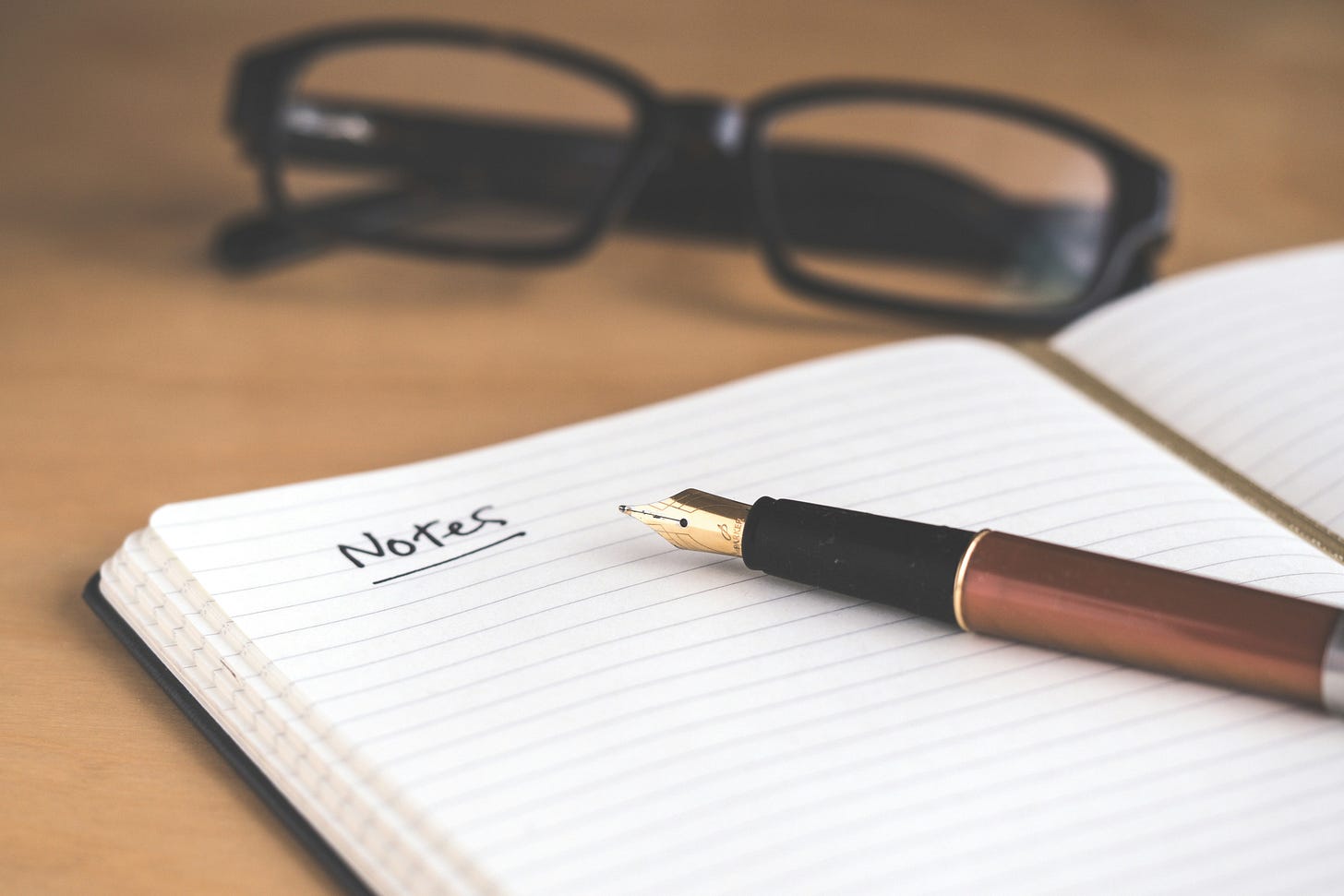A Simple 5-Steps Framework for Software Engineers to Take Notes and Apply Book Insights Effectively: Part 2
A Step-by-Step Guide to Note-Taking That Enhances Application and Teaching Skills for Software Engineers

In Part 1 of this series, we introduced the idea of being a Professional Learner.
As a software engineer, you should have a method to learn new things consistently. Look for new sources every day because, in our industry, things change daily. We can’t sit on the idea of being an expert; we must always be up-to-date.
However, it is also crucial to understand how to apply our knowledge.
Learning for the sake of learning can be fun, but as engineers, we have to apply theory to practice. For this reason, it is essential to understand, organize, and elaborate on concepts so that we can use and teach them.
You master a subject, and when you can use it in practice, you can teach it.
This guide focuses on mastering the knowledge you take from books. Whether they are ebooks or paper books, I will explain my framework to organize your knowledge. By the end of the guide, if you apply it consistently, you will be able to:
Merge topics from different books and create your content.
Organize your ideas to prepare a presentation.
Teach what you learned with real examples.
Understand how to put into practice what you learned.
In Part 1, I explained Step 1: Read and Mark.
So, let’s start with Step 2.
2. Transfer
We left Step 1 with a bunch of marks on our paper book or a bunch of highlights on our ebook.
What now?
Now, it is time to transfer that information to another support.
Transferring information is essential. When you finish a book, all the concepts expressed by the book are in 2 places: the book and your brain. Those places are not ideal.
Your mind is for having ideas, not holding them.
David Allen, Getting Things Done
I read many books in my career, and one of the most frustrating things happened to me: “I know I read about this topic, but I don’t remember where…” At this point, I had to start scrolling through the pages of my books to find out about that topic.
I’ve been conversing with colleagues, where we discussed the Repository Pattern.
Even if I clearly remembered something we were implementing was wrong, I couldn’t explain it, and I didn’t have the time to find the explanation. I couldn’t remember which book I read had a clear example of it.
A unified place to store your notes is essential to avoid such situations.
You want your notes to be:
Safe
Searchable
Linkable
Easy to update
You must transfer ideas and concepts from books to unified support.
From Marks To Notes
The idea of the Transfer step is to transform what you marked in a book into notes.
Paper Books
After Step 1, you should have a few pages of your book with marks on the side.
Now, it is time to move ideas, concepts, and quotes from the book to your notes. To do that, you can go through the pages you read and look at the sides. If you find a mark on the side of the page, you can read the line marked and transfer it.
To transfer it, there are multiple ways:
Write the sentence as it is.
Write a summary of the sentence.
Write the core concept.
Everything works; it depends on the sentence itself and your personal preference.
The only thing that matters is to transfer something valuable so that you won’t need to rely on the book for that part.
Ebooks
After Step 1, you should have a few pages of your book, with highlights you created using the system of your ebook reader.
It is now time to extract those highlights.
Depending on your ebook reader, the extraction phase might be different. Generally, every ebook reader should allow you to extract your book’s highlights and notes to a file. The structure of this file depends on the ebook reader.
The most common extracted file is called Clippings.txt, a simple text file containing one entry for each highlight.
There are also other type of exports. Using the Kindle app, for example, allows you to extract your highlights as an HTML file. That file contains more information than the Clippings file, such as page number and sub-chapter title.
Any extraction method works. What matters is you achieve this goal: transfer something valuable so you won’t need to rely on the book for that part.
Structure Your Notes
Giving your notes a structure is essential.
By giving a consistent structure to your notes, you make them easier to read. Once you start getting confident with the technique, writing notes following the same pattern is faster than re-inventing a structure every time.
My suggestion is to create a mini-version of the book as the structure.
When transferring my notes, I start with the chapter title and the page number. Then, under that, the title of the sub-chapter, if present, with its page number. Finally, every note inside that sub-chapter has its page number.
The image above shows one of my first booklogs. At the top of the page, you can see the book’s title, “The 5 dysfunctions of a team”. Below that, it starts with the book's first part, “The Fable”. Finally, every sub-chapter has its related notes.
This image shows the booklog of a book I am reading while writing this post: “Architecture Modernization”. My technique is slightly different, but the main idea is the same.
BOOK_TITLE: PAGE_NUMBER
- CHAPTER_TITLE: PAGE_NUMBER
- SUBCHAPTER_TITLE: PAGE_NUMBER
- NOTE: PAGE_NUMBER
- NOTE: PAGE_NUMBERThis is my strategy, but feel free to create your structure.
The only thing that matters is that you can easily read and write notes. Be consistent with your structure and experiment with what works best for you.
Digital vs. Paper Support
This method works with both digital and paper support to transfer your knowledge.
As you’ve seen in the images, I tried paper and digital notes.
However, digital support has many advantages:
Content is easier to search.
It is easy to re-organize your notes.
It is safer if you store it in the cloud.
It is easier to update.
I started with a method called Book Log, which I found in BuJo’s blog.
I’m lazy. I aim to read and learn, so I almost immediately simplified it. I used to write my notes, as suggested by the BuJo method, in my notebook, but after 4 or 5 books, I realized that didn’t work. I didn’t have to look for topics in books, but I still had to look for them in my paper notes.
Using paper support is an improvement compared to none, but it’s not enough.
So, I made the horrible choice of writing notes into my notebook and then transferring them again to digital support. That means just doing twice the work for the same result. That’s why I started transferring my notes directly into digital support.
I use LogSeq for all my notes, including booklogs.
Transfer Sessions
At this point, you might ask:
When can I start transferring my marks to notes?
This question has multiple answers:
Transfer while reading.
Transfer when you finish a book.
Transfer when you finish a chapter.
Transfer when you finish a reading session.
1. Transfer While Reading
I don’t recommend this option.
My suggestion is to focus on reading while you read. If you stop reading to start transferring, you are doing a context switch. You break the reading flow.
When you read, focus only on reading and marking.
2. Transfer When You Finish A Book
I do not recommend this option either for 2 main reasons:
When you finish a book, you feel accomplished. This feeling is even stronger if you complete the booklog with the book.
If you start transferring notes at the end of the book, you don’t get the benefits of the booklog until you finish the book.
Don’t wait until the end of the book to transfer your notes.
3. Transfer When You Finish A Chapter
This is a valid option.
When you finish a chapter, you take your time to analyze what you read. That’s an excellent moment to start transferring. Also, the end of a chapter usually means the end of a topic, so transferring all the related notes is very valuable.
The end of a chapter is a great moment to transfer your notes.
4. Transfer When You Finish A Reading Session
Transferring your notes when you finish a reading session is a valid option.
Once you finish a reading session, transferring your notes is a great way to cement what you just read in your mind. When you finish reading, you can start transferring your notes instead of just stopping and moving to do something else. By doing that, you still think about what you read and prevent your brain from immediately thinking about something else.
This option is beneficial if your book has long chapters.
The 2 Bookmarks Technique
What if I don’t have time to transfer my notes immediately?
What if I am traveling and can’t access my notebook?
Should I stop reading until I transfer the chapter I read?
There are situations when you cannot transfer your notes as usual.
This shouldn’t be an excuse to stop reading. Nothing should prevent you from reading. Reading is your primary goal, and nothing should come first.
You can use the 2 bookmarks technique for situations like those described.
When you read a book, you should always have 2 bookmarks. Use the first bookmark to sign the first page you need to transfer and the second for the page you need to read. Let me give you an example:
Today, I read 10 pages of a book.
I put bookmark 1 at the start of the book and bookmark 2 on page 11.
I transfer the pages I read and move bookmark 1 to page 11, too.
I read 15 pages more, so bookmark 2 goes to page 26 (25 read, so the next one is 26), while bookmark 1 stays at page 11 since those pages have not been transferred yet.
This technique works also for ebooks. Many ebook readers can add a bookmark to a page, which you can use for this method.
Summary
Transfer your notes to be:
Safe
Searchable
Linkable
Easy to update
Give a fixed structure to your notes
Digital support is better than paper support.
Transfer your notes:
At the end of a chapter
At the end of a reading session
Use the 2 bookmarks technique.
Read Next:
A Simple 5-Steps Framework for Software Engineers to Take Notes and Apply Book Insights Effectively: Part 1
Software engineers need to be Professional Learners.
Bullet Journal For Software Engineers: How To Remember Everything And Increase Your Productivity (Part 1)
As a Software Engineer, you want to take notes.






